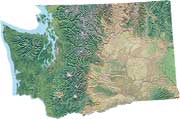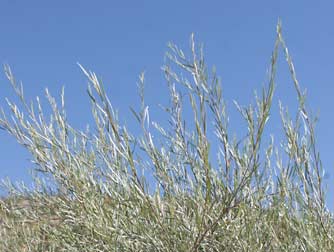
Coyote willow
Coyote willow is also called narrow-leaf willow, river or sandbar willow, gray willow, dusky willow, pussywillow or Salix exigua, and it grows at low elevations on stabilized river bars and along streams and wetlands from Alaska to California. These willows are shrubs or very small trees that have narrow, light green leaves, and they grow in dense thickets that offer refuge for wildlife, including nesting sites for diverse species of breeding songbirds and flycatchers.
Coyote willow provides year-round browse for rabbit, beaver, deer, elk, and moose, while ruffed grouse, blue grouse, sharp-tailed grouse and other birds forage willow buds and catkins to help survive tough winters. Willow flowers provide emerging native bees, honey bees and other pollinators their first nectar and pollen source of early spring, helping support the bottom of the food chain.
These willows are a host plant for Viceroy butterfly, which used to be common along the Columbia River and Okanogan in the early 1900's and now holds on in unsprayed thickets along the lower Yakima, Snake and mid-Columbia River around Tri-Cities, and and in lower Grand Coulee. Its leaves also host sylvan hairstreak butterflies, Compton tortoiseshell, Canadian tiger swallowtail, mourning cloak and Lorquin's admiral butterflies, and the beautiful western sheep moth.
Native Americans used tough, flexible Salix switches for making baskets, scoops, fish traps and lodges, and rendered salicin, a chemical similar to acetylsalicylic acid or aspirin from its bark to treat headaches, sore throats and other ailments. Native people also constructed salmon wiers with willow poles, for their strength but also because the cuttings took root easily anchored themselves in streambeds. Not surprisingly, willows tend to grow near where natives lived over the centuries.
Willows are easy to propagate from cuttings and are commonly used these days to stablilize streambanks and reduce erosion, filter nutrients from stormwater, and provide cooling shade and a terrestrial food source along trout and salmon streams.
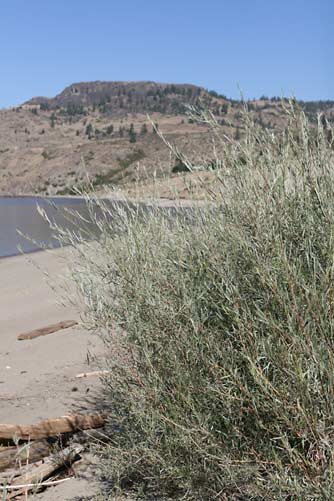
Coyote willow or Salix exigua
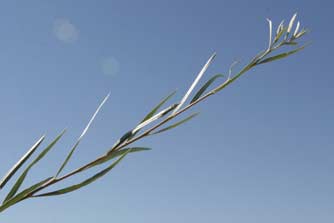
Coyote willow branch and leaves
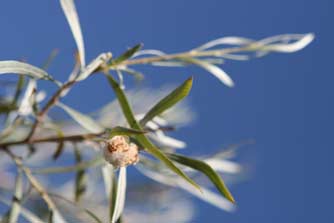
Coyote willow
